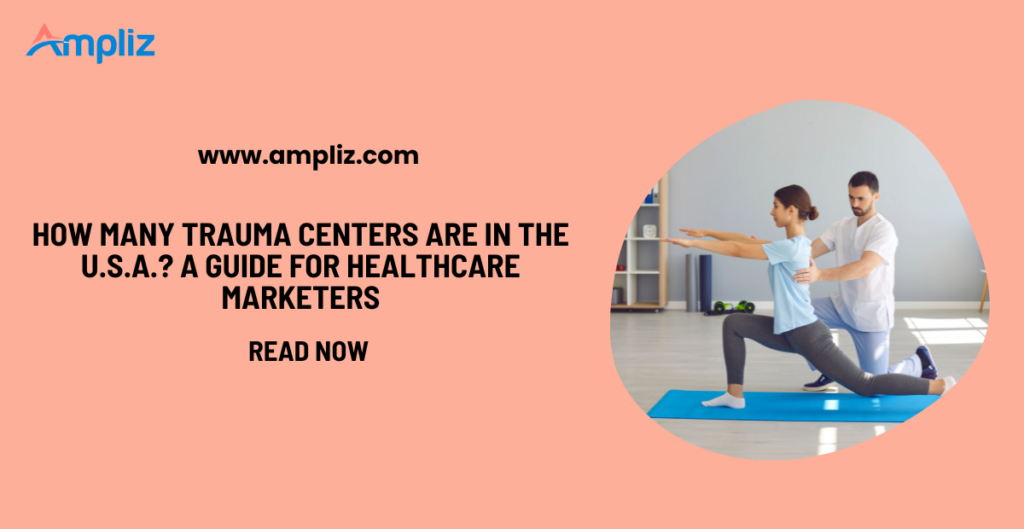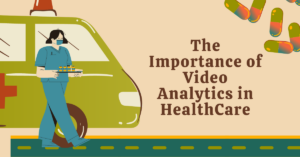In the fast-paced world of healthcare, trauma centers play a crucial role in saving lives. These specialized hospitals provide immediate care to patients suffering from traumatic injuries like car accidents, gunshot wounds, and severe falls. For companies offering healthcare products and services, trauma centers represent a vital market with unique demands and high stakes.
But how many trauma centers are there in the United States? And more importantly, how can marketers effectively reach these institutions with their offerings? This blog dives deep into the landscape of trauma centers in the U.S., lists the top 20 facilities you should know about, and explores how healthcare marketers can use Ampliz Healthcare Intelligence to access, analyze, and approach the right decision-makers.
How Many Trauma Centers Are in the U.S.?
As of the latest available data, there are approximately 1,500 trauma centers across the United States. These are categorized by levels I through IV, with Level I trauma centers offering the highest level of surgical care to trauma patients.
Trauma Center Levels:
- Level I: Comprehensive care, research, education, and a wide range of specialists
- Level II: High-level care but without all the research and residency programs
- Level III: Stabilization and transfer services with some surgical capabilities
- Level IV: Basic emergency care, stabilization, and transfer capability
These trauma centers are strategically distributed to ensure timely care across urban and rural areas. For healthcare marketers, understanding the level and capacity of each center is crucial in tailoring outreach strategies.
Top 20 Trauma Centers in the U.S. & How to Reach Them
Here’s a list of 20 leading trauma centers in the U.S., along with insights on how to approach them for marketing purposes.
| Rank | Trauma Center Name | Location | Trauma Level | Marketing Tip | Data Source |
|---|---|---|---|---|---|
| 1 | Johns Hopkins Hospital | Baltimore, MD | Level I | Target surgical supply & tech teams | Access Now |
| 2 | Massachusetts General Hospital | Boston, MA | Level I | Focus on research-based solutions | Access Now |
| 3 | Cleveland Clinic | Cleveland, OH | Level I | Offer innovative treatment tools | Access Now |
| 4 | Mayo Clinic | Rochester, MN | Level I | Pitch advanced diagnostic devices | Access Now |
| 5 | NewYork-Presbyterian Hospital | New York, NY | Level I | Leverage academic partnerships | Access Now |
| 6 | Ronald Reagan UCLA Medical Center | Los Angeles, CA | Level I | Emphasize digital health solutions | Access Now |
| 7 | Barnes-Jewish Hospital | St. Louis, MO | Level I | Highlight trauma care equipment | Access Now |
| 8 | Cedars-Sinai Medical Center | Los Angeles, CA | Level I | Focus on high-end tech collaborations | Access Now |
| 9 | University of Michigan Medical Center | Ann Arbor, MI | Level I | Position for surgical innovations | Access Now |
| 10 | Northwestern Memorial Hospital | Chicago, IL | Level I | Build relationships with clinicians | Access Now |
| 11 | Vanderbilt University Medical Center | Nashville, TN | Level I | Customize offers for teaching hospitals | Access Now |
| 12 | Stanford Health Care | Stanford, CA | Level I | Approach with AI and robotics solutions | Access Now |
| 13 | Emory University Hospital | Atlanta, GA | Level I | Engage decision-makers via webinars | Access Now |
| 14 | Duke University Hospital | Durham, NC | Level I | Target procurement teams directly | Access Now |
| 15 | UC San Diego Health | San Diego, CA | Level I | Present sustainable healthcare tools | Access Now |
| 16 | UPMC Presbyterian | Pittsburgh, PA | Level I | Showcase clinical trial support tech | Access Now |
| 17 | University of Washington Medical Center | Seattle, WA | Level I | Offer telehealth integration systems | Access Now |
| 18 | NYU Langone Health | New York, NY | Level I | Use data-driven outreach techniques | Access Now |
| 19 | Mount Sinai Hospital | New York, NY | Level I | Present value-based care models | Access Now |
| 20 | Houston Methodist Hospital | Houston, TX | Level I | Leverage EMR optimization strategies | Access Now |
Reaching Trauma Centers: Marketing Tips
- Segment by Level and Region: Different trauma center levels have distinct needs. Customize your messaging accordingly.
- Build Educational Content: Position your product or service as a solution to a problem trauma centers face.
- Use Data to Personalize Outreach: Understand hospital purchasing trends and department needs.
- Engage Through Clinical Staff: Surgeons and emergency physicians often have influence on purchasing decisions.
How Ampliz Healthcare Intelligence Helps
Ampliz is a powerful healthcare intelligence platform that empowers B2B marketers, sales teams, and healthcare vendors with the data they need to succeed in a competitive market.
Key Features:
- Accurate and Verified Database: Access contact data for hospital decision-makers, including C-level executives, department heads, and procurement managers.
- Hospital Segmentation Tools: Filter hospitals by trauma level, size, specialties, location, and other key parameters.
- Sales Intelligence: Uncover insights about technology usage, hospital affiliations, and recent developments.
- Compliance and Privacy Adherence: Ensure your outreach complies with HIPAA and CAN-SPAM regulations.
With Ampliz, marketers can:
- Identify the right trauma centers for their solutions
- Understand the hierarchy and influence map within each institution
- Create personalized, effective campaigns that resonate with stakeholders
Conclusion
Trauma centers are vital institutions in the U.S. healthcare system, and reaching them with the right products and services can lead to impactful business relationships and improved patient outcomes. With around 1,500 centers and many being Level I facilities, the opportunity is vast.
To navigate this complex ecosystem, platforms like Ampliz Healthcare Intelligence provide invaluable support—offering data-driven insights that drive smarter decisions and more successful outreach. Whether you’re marketing trauma care supplies, digital health tools, or surgical innovations, knowing where and how to connect makes all the difference.
Start leveraging Ampliz today to tap into the trauma center market and elevate your healthcare marketing strategy.



